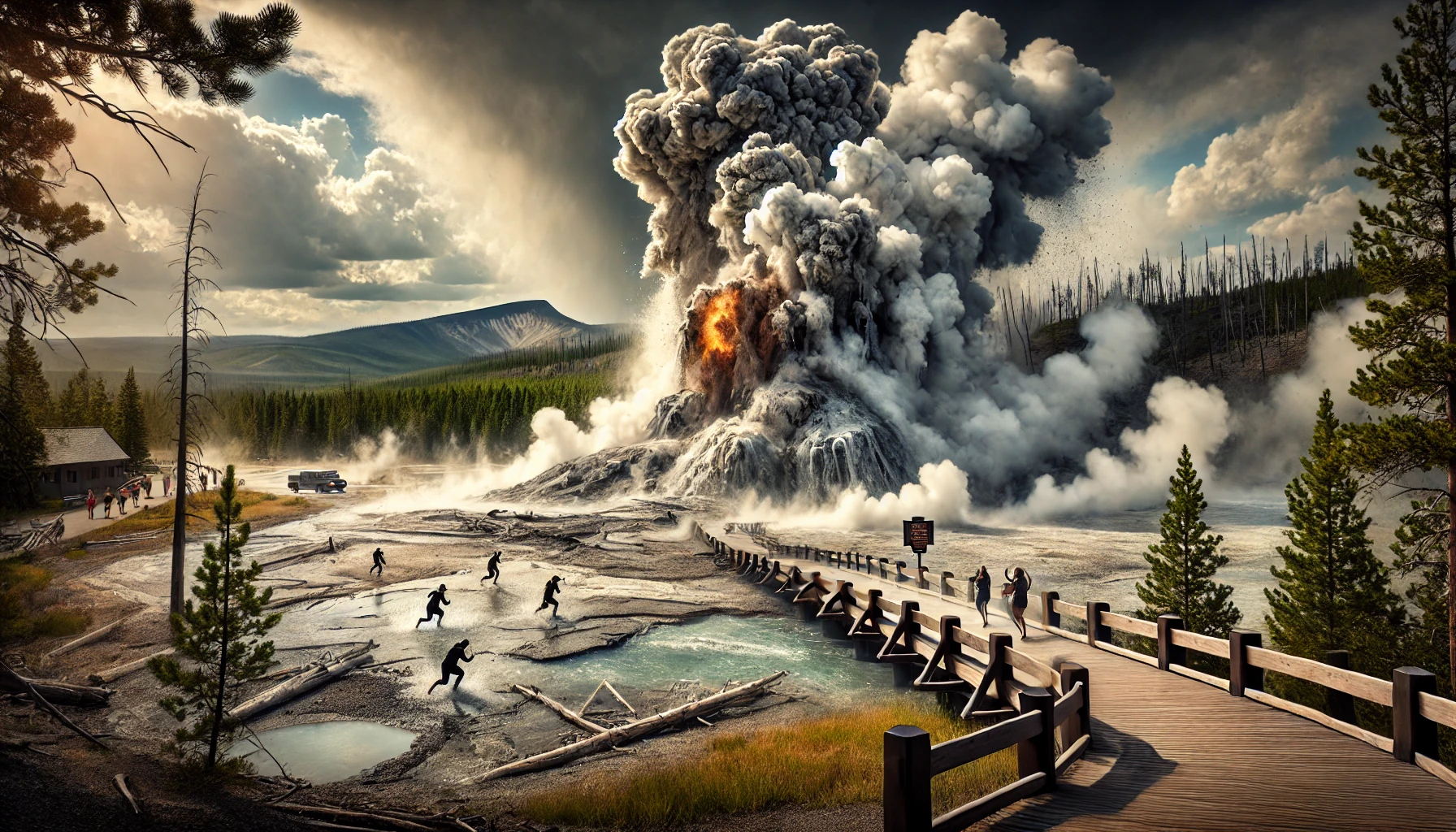Introduction
Yellowstone National Park, renowned for its stunning geothermal features and unique ecosystems, recently experienced a hydrothermal explosion. This incident, which occurred in the Biscuit Basin area, underscores the dynamic and sometimes unpredictable nature of the park’s geothermal activity. Understanding these events is crucial for both public safety and the ongoing scientific study of one of the world’s most fascinating natural landscapes.
Incident Overview
Time and Location
The explosion took place around 10 a.m. on a Tuesday, approximately 2.1 miles northwest of the iconic Old Faithful geyser. The Black Diamond Pool in Biscuit Basin is suspected to be the origin point of the explosion.
Immediate Impact
While no injuries were reported, the explosion caused considerable damage to a boardwalk and led to the closure of Biscuit Basin’s parking lot and boardwalks. Videos posted online by witnesses showed debris scattered across the area and significant damage to the boardwalk.
Scientific Context
Hydrothermal Explosions
Hydrothermal explosions occur when water trapped underground rapidly transforms into steam, resulting in an explosive release of steam, mud, and rock. These explosions, although dramatic, are relatively common in geothermal areas like Yellowstone. According to Michael Poland, Scientist-in-Charge at the U.S. Geological Survey’s Yellowstone Volcano Observatory, the recent explosion does not signal any unusual volcanic activity and is not indicative of an impending volcanic eruption.
Historical Precedents
Yellowstone has a history of similar hydrothermal explosions. Notable incidents include an explosion in Biscuit Basin in May 2009, a smaller event in Norris Geyser Basin on April 15, and a significant explosion at Porkchop Geyser in Norris Geyser Basin in 1989. These events highlight the ongoing geothermal activity that characterizes the park.
Frequency and Scale
Large hydrothermal explosions occur infrequently, averaging one every 700 years. These explosions can create craters over 328 feet wide. At least 25 such craters have been identified within Yellowstone, emphasizing the park’s dynamic and active geothermal system.


